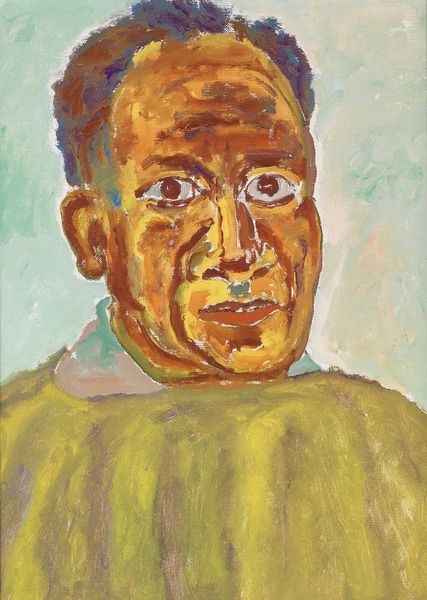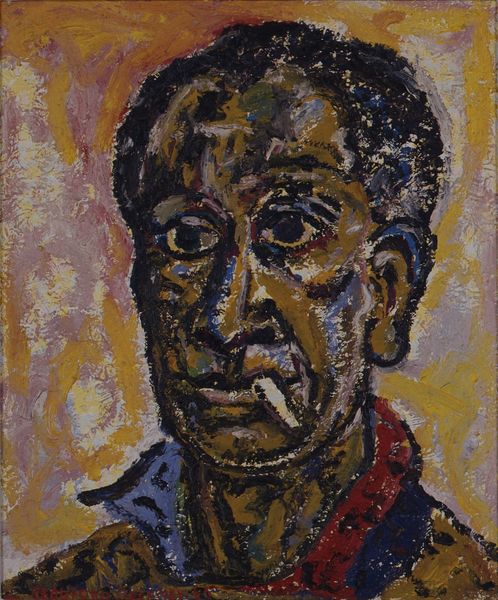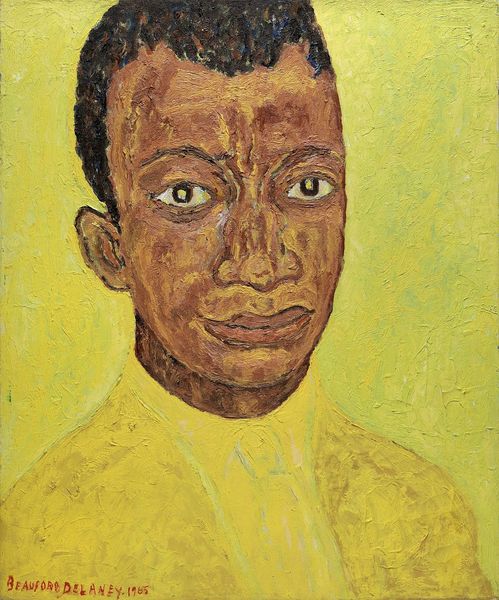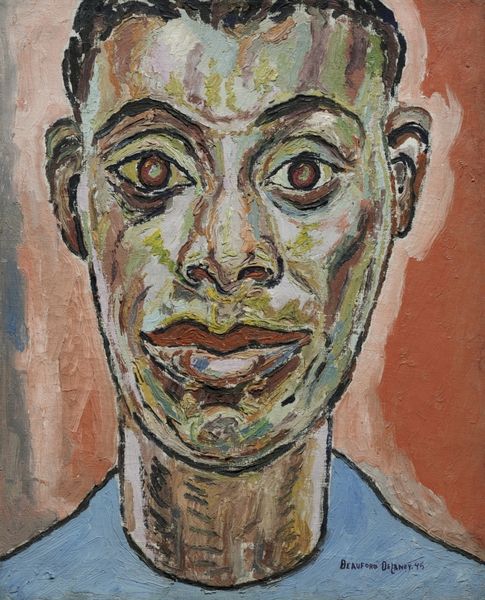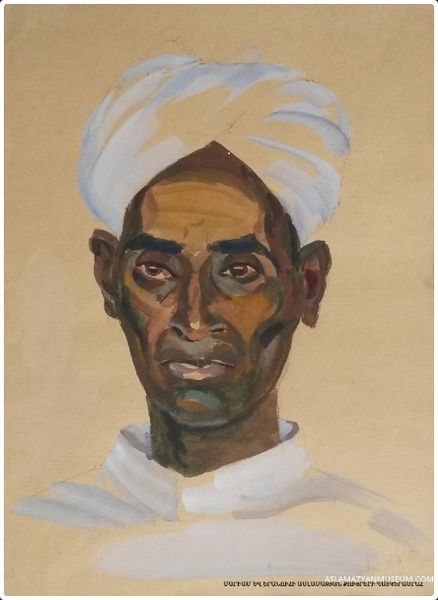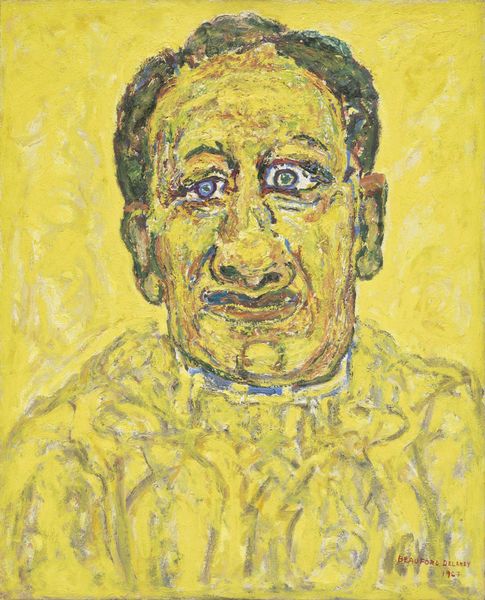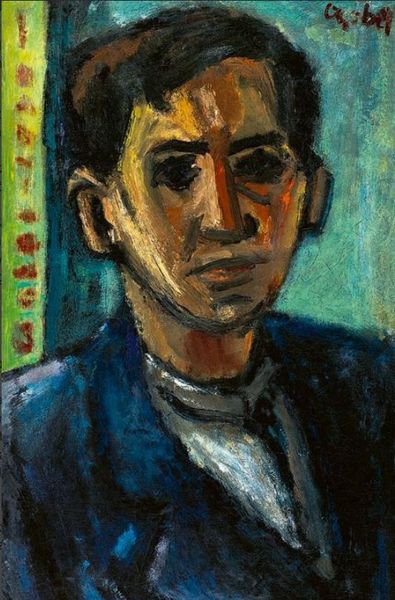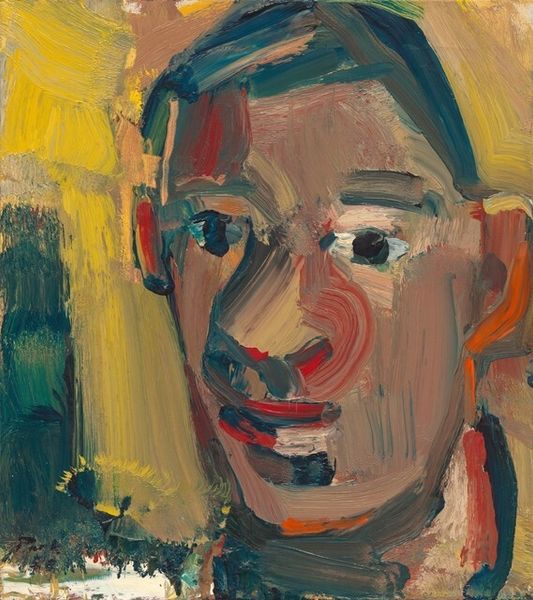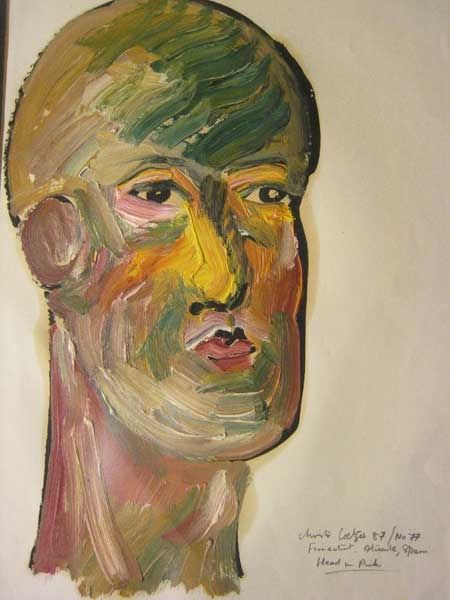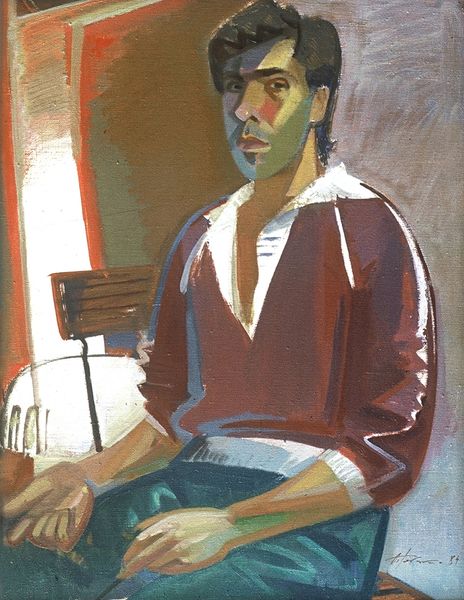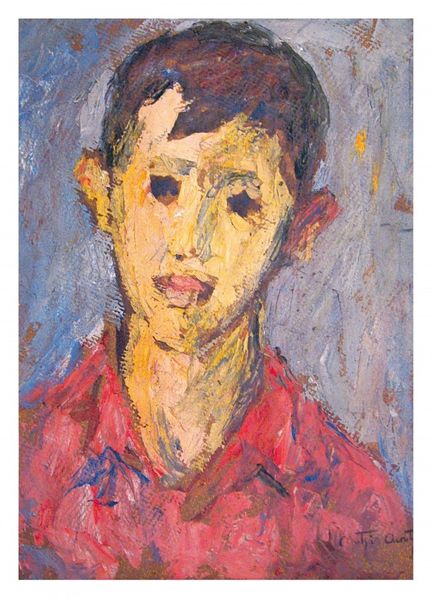
oil-paint
#
portrait
#
oil-paint
#
figuration
#
oil painting
#
modernism
#
realism
Dimensions: 24 x 17 cm
Copyright: Mariam Aslamazian,Fair Use
Curator: This is "The portrait of Jaipurean artist" by Mariam Aslamazian, an oil painting from 1970. I am immediately drawn to the direct gaze. It’s almost confrontational, don't you think? Editor: It does demand attention, doesn’t it? The way Aslamazian uses these broad strokes, there’s a raw honesty that is disarming. Looking at this work from 1970, it’s essential to recognize the landscape of representation at that moment. What narratives were being prioritized? And who had control over those visual stories? Curator: Ah, framing it so sharply! You make it sound political, but I experience the painting as rather tender and filled with dignity. I think Aslamazian really captures the essence of a fellow artist. Editor: I agree, that tenderness is undeniably present in the deliberate brushstrokes defining his face, each reflecting a history, and a shared moment. His gaze seems knowing and world-weary. If we place this painting within the post-colonial discourse of the 70s, we might ask: how does Aslamazian, an Armenian artist, engage with representing someone from Jaipure, India? What power dynamics are in play here? Curator: A power play indeed, of course! It feels far more respectful than exploitative. I mean, notice how Aslamazian doesn't exoticize the Jaipurean artist, but humanizes him? The rather drab light-blue background and simple yellow shirt force the viewer to engage with his face as the focal point of contemplation. It feels incredibly intimate, almost like an extended study of self. Editor: Precisely. I also think it interesting how this painting reflects a fusion of styles—hints of modernism with strong realistic elements. Perhaps Aslamazian is also pushing against a Western canon, embracing a global dialogue through artistic expression. She reclaims narrative space. Curator: Ultimately, the real magic here is the ability to bridge divides through paint, capturing an elusive essence with so much emotion. It’s more than a portrait; it's a feeling. Editor: I agree. Aslamazian prompts us to reconsider not just art history, but its relation to larger structures that shape and govern our understanding of the self and other. And how poignant, ultimately, that even a single face on a canvas can tell such complex story.
Comments
No comments
Be the first to comment and join the conversation on the ultimate creative platform.


